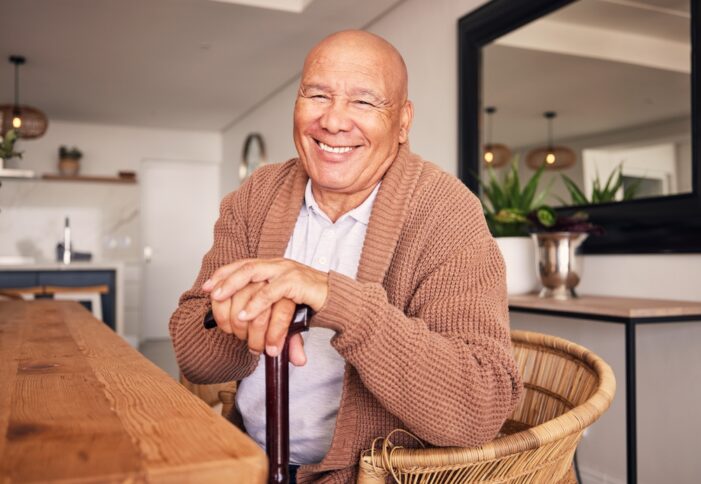
If you’re leaning toward aging in place, then you’re part of the majority. Among older Americans (aged 50+), a 2018 AARP study found that 76% prefer to stay in their current home. While avoiding the cost of an assisted living facility and the hassle of downsizing and moving are benefits, aging in place does require investment and action.
The most critical step is to perform a safety assessment of your home and come up with a plan for what modifications are needed to improve its safety and comfort as physical needs and abilities change in later life.
The Importance of Home Modifications for Aging in Place
Modifications are critical for safety and savings. Falls are a top health hazard for seniors, and of the three million older Americans (ages 65+) annually treated for falls, 800,000 resulted in a hospital stay with an average cost of $33,000.
Improving home safety is the key to reducing in-home falls and fractures. A 2015 study showed that every $1 spent on aging in place home modifications results in a $1.50 return via reduced medical spending for seniors aged 75 and older.
Essential Home Modifications for Aging in Place
When it comes to home remodeling and modifications, working with a blank slate is key. Start by decluttering and removing walkway obstacles, and then go through your home room by room to gauge your needs.
Bathroom Modifications
Fall prevention changes are critical in the bathroom. Consider:
- Curbless shower or walk-in bathtub with room for a shower chair
- Nonslip flooring and tub/shower floor coating
- Handheld shower
- Anti-scaling temperature control
- Grab bars in wet area and by toilet
- Comfort height toilet
- Automatic flush feature
Kitchen Modifications
The kitchen is another hotspot for home safety. Depending on accessibility needs, check out:
- Raised, lowered, or adjustable countertops
- Adjustable and pull-out cabinets
- Shallow sink
- Easy-to-use appliances with automatic shutoff
- Non-slip flooring
Bedroom Modifications
Focus on comfort, reachability, and ease of moving from supine to standing in the bedroom. Look into:
- Bedside safety rails
- Lower or higher bed height to comfort
- Accessible closets
- Ceiling lift
General Home Modifications
Some changes will apply throughout the home. Consider:
- Widened doorways and hallways
- A zero-step ramped entrance
- A stair lift or elevator
- Improved lighting and visibility
- Remove throw rugs or use carpet tape/fasteners
- Replace standard door knobs and faucets with levers
The Financial Aspect of Aging in Place Modifications
So how much will all these changes cost, and how will you pay for them?
Estimating the Cost of Home Modifications
Like any home improvement project, there isn’t a simple price tag. Your home modification will depend on:
- Location: state and city cost of living, and the distance or access to labor and materials
- Home size, style, and age
- Number of levels and staircase arrangements
Aging adults remodeling for the purpose of aging in place spend anywhere from $350 to $50,000 or more, but the average budget is $9,500, with top priority given to changes focused on bathroom safety.
Exploring Funding Options for Home Modifications
Changes like removing loose area rugs and switching to higher-wattage light bulbs won’t have a steep cost, but projects like stair lifts or a full bathroom remodel require a budget in the thousands.
The good news is that you have more options than your current bank account to help with the costs:
- Government assistance programs
- Nonprofit organizations and charities
- Home improvement loans
- Sale-leaseback
Check with your Agency on Aging to find out what resources exist in your state and county. There are 56 state and 622 area agencies under the federal Aging Network, and they’re a great place to start for resources and referrals for aging at home planning and other older adult needs.
How a Residential Sale-Leaseback Can Help
When it comes to aging at home and making your home equity work for you, there is a perfect option: sale-leaseback. A residential sale-leaseback is an arrangement that allows you to:
- Continuing living in your home as long as you choose
- Convert equity to cash to fund modifications, pay off a mortgage, or boost your nest egg
- Off-load the responsibility of property repairs and covered maintenance
- Stop paying property tax, homeowner’s insurance, and mortgage interest
There are many sale-leaseback benefits to explore. Under a sale-leaseback, you sell your home and lock in a monthly lease payment with the guaranteed ability to stay as a renter.
Sale-leasebacks can help fund long-term at-home care, or serve as a short-term arrangement that reduces the hassle of a traditional sale and ongoing maintenance while you transition to a new living arrangement.
Key Takeaways
Aging in place is a proactive approach to ensure you or a loved one can remain at home in later years without sacrificing environmental safety or quality of life. For this, a home safety evaluation and modification plan is an important step.
There are many changes that can reduce falls, add to comfort, and prolong one’s ability to remain in the family home. While some modifications cost in the thousands, there are many that are easy to complete on a low to moderate budget.
Consider a sale-leaseback as part of an age-in-place plan to fund modifications and eliminate the work and cost of homeownership.
Sources:
- AARP. 2018 Home and Community Preferences: A National Survey of Adults Ages 18-Plus. https://www.aarp.org/pri/topics/livable-communities/2018-home-community-preference/
- Urban Institute. American Seniors Prefer to “Age in Place”—But What’s the Right Place? https://www.urban.org/urban-wire/american-seniors-prefer-age-place-whats-right-place
- Eldercare Locator. The Aging Network. https://eldercare.acl.gov/Public/About/Aging_Network/Index.aspx
Fixr. How much does it cost a remodel to adapt a home for aging in place? https://www.fixr.com/costs/aging-in-place-remodeling



















